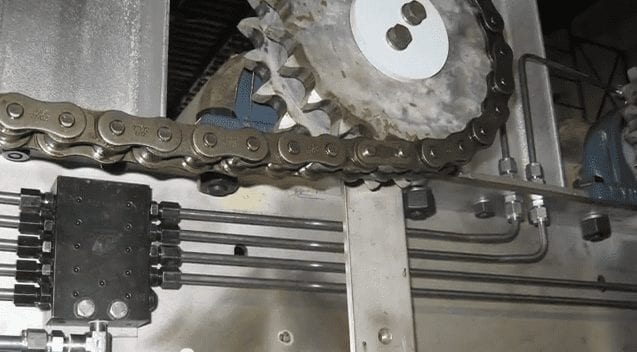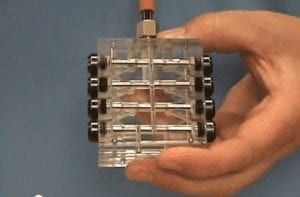I recently went to a seminar on lubrication basics. Mike Deckert of Flo Components Ltd presented this.
So why talk about Lubrication on an industrial automation website? Lubrication is vital in maintaining uptime on equipment. It is often thought of near the end of most automation projects, but it should be a principal component of all projects. If a piece of equipment moves, it will probably need Lubrication. We often talk about MTBF (Mean Time Before Failure) on equipment. MTBF will be very low if Lubrication is neglected.
In a study conducted by a principal component manufacturer, over 50% of failures result from improper Lubrication. (Pins and Bushing)
- Lubrication Related Failures: 54%
- Inadequate Lubrication – 34.4%
- Contamination – 19.6%
- Installation Errors – 17.7%
- Overload – 6.9%
- Storage and Handling Errors – 2.8%
- Other 18.6 %
Bearings fail in a plant for many reasons. Manual Lubrication is still the dominant method of Lubrication for grease bearings. 95% of all directions are manually lubed. With plant production increasing, the scheduled service time between has lengthened. The maintenance staff has generally been reduced, resulting in fewer people carrying out the lubrication requirements.
Lubrication has the following functions:
- Reduce Friction
- Reduce Wear
- Helps Dampen Shock or Absorb Shock
- Reduce Temperature
- Minimize Corrosion
- Seal out Contaminants
Lubrication interval depends on the following:
- The metal-to-metal contact area of the bearing
- Environment (Application)
- Machine Speed
- Operating Temperature
- Type of Grease
Not all grease is the same. A grease is a solid or semi-solid formed when a thickening agent is dispersed in the oil base. Additives give grease its final unique properties. The National Lubrication Grading Index (NLGI) will grade the grease from 000 to 6, but this is not the whole story. Always look at the manufactures specification. Base oil viscosity can be completely different but still have the same NLGI.
Why are automatic lubrication systems better?
- Grease evenly distributed
- The best time to grease is when the object is in motion. This spreads the grease evenly.
- Will not over lubricate
- Grease is delivered by measured injection. This prevents seals from blowing out.
- The correct amount of grease is applied.
- This will ensure the maximum life of the equipment.
- Environmentally safe
Lubrication is a vital component of automation. MTBF can be increased if we ensure that our moving parts are well-maintained.
Flo Components Ltd. is an excellent company to help you understand and maintain your systems. They have a library full of information on their website.
www.flocomponents.com/Library.htm
I encourage you to check this out and make lubrication part of your automation projects. If you have any questions or need further information, please get in touch with me.
Thank you,
Garry
If you’re like most of my readers, you’re committed to learning about technology. Numbering systems used in PLCs are not challenging to learn and understand. We will walk through the numbering systems used in PLCs. This includes Bits, Decimals, Hexadecimal, ASCII, and Floating Points.
To get this free article, subscribe to my free email newsletter.
Use the information to inform other people how numbering systems work. Sign up now.
The ‘Robust Data Logging for Free’ eBook is also available as a free download. The link is included when you subscribe to ACC Automation.



